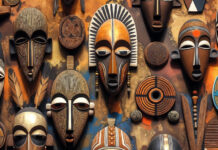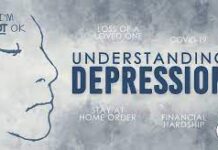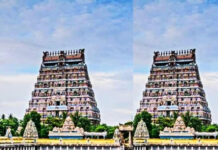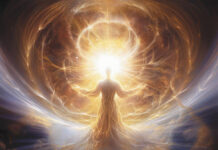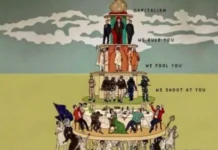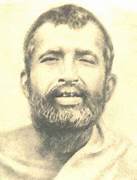
Dear JeMo
Greetings. I have had a question for a long time, sometimes it seems absurd, and at other times, it feels intriguing. That is, in Hindu mythology, we often see the scene where “he performed penance, and God appeared before him.” In the history of Buddha, it is mentioned that before he attained enlightenment, he engaged in severe penance along with five others. It is told that after consuming very little food, he almost reached the point of death, after which he changed his path. If this is how it is depicted in mythology, I wonder if there might have been similar experiences of directly seeing God even before these stories.
Is the basis for such myths extreme imagination, or is it a sort of illusion or hallucination or delusion caused by being in deep meditation or focused thought for many days that made one believe they saw ‘God’? Or could it be a necessity to complete the penance, a form of mental satisfaction, or something else entirely?
I searched to see if you had written anything about this but couldn’t find anything. I am eager to know your thoughts on this matter. This question isn’t based on the belief that myths are events that actually happened long ago; rather, my curiosity is about the psychological feature that might have inspired such writing or imagination.
Regards
Gokul
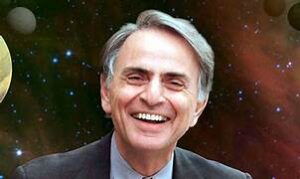
Dear Gokul,
Let’s start with an interesting story. In the science fiction novel *Contact* by Carl Sagan, the protagonist, Ellie, is involved in research at a laboratory investigating the existence of extraterrestrial life. One day, a message begins to appear on the instruments that monitor signals from space. They manage to decode the message, and it turns out to be a blueprint for a machine.
The machine is built. Ellie enters it and travels through wormholes in space, traversing across the universe through time, beyond the Milky Way, and across light-years. There, she encounters beings or consciousnesses that emerged at the very beginning of the universe. They are far ahead in evolution, having lived and moved on from various galaxies. Now, they exist as masters of the universe, creators who continue to build and expand the cosmos further and further.
In their evolution, their individual selves have expanded into a vast consciousness, becoming a collective awareness. As they no longer need a physical body, they have become bodiless entities. Consequently, time and space no longer apply to them. As pure consciousness, they are able to communicate directly with Ellie’s consciousness. However, Ellie, with her limited human consciousness, is unable to fully perceive or understand them. This creates a deep sense of frustration and yearning within her.
Therefore, one of them creates a vast virtual world for her. Ellie had lost her father when she was young. In her memory, the time she spent with her father on a sunlit beach remains an everlasting image. One of the universe’s creators takes that memory from her consciousness and recreates the beach as ‘real’. He even appears as her father in this recreated beach and converses with her as if he were truly real.
Written with precise scientific information by the world-renowned scientist Carl Sagan, this novel reaches this moment where it transcends the boundaries of science and moves towards poetry. This is a literary quality that is rarely found in any other work of science fiction.
This climax touches upon a very significant point of possibility. How can the human consciousness comprehend the infiniteness of time, the universe, energy, and the cosmic mind? To what extent can it grasp them with its consciousness? How much of it can it express?
Human consciousness is something that cannot be separated from the human body. Even if it were to be separated, it would only be possible at a peak state. We perceive our existence through our body, and that is the limit of our possibilities. The human body exists within space and time. Therefore, our inner self is nothing but a subtle form of the material perception that we experience through our body’s senses. We can only perceive and express our inner self through images and linguistic representations. Timeless existence or subtle existence without a material form is typically beyond our ordinary understanding.
Ellie’s limit of perception is just that. She cannot extend her consciousness beyond her bodily existence. Therefore, she cannot comprehend the vast universal consciousness. As a result, those universal forces graciously descend, enter within her limits, and manifest themselves in forms that she can perceive.
If we conveniently symbolize those universal forces as Gods, then the event Carl Sagan describes becomes almost identical to any Hindu mythology, doesn’t it? There’s no other way; the climax of this novel can only be depicted in this manner.
There is another way. Ellie could shed her bodily existence and transform herself into universal consciousness, allowing her to meet them directly.
In other words, either God must become human, or the human must become God. Hindu mythology has depicted the encounter with the divine in both these ways. What the sage who wrote the mythology was trying to express is the same thing the modern astronomer is attempting to convey.
Western scientists have extensively studied the spiritual experiences of Indian sages through their empirical, scientific lens. Their common explanation for practices like meditation is that the profound visions or mystical experiences are simply the result of prolonged isolation and inactivity, which lead to intense feelings of boredom.
But when they try to explain the ordinary literary experience that every reader encounters daily, through their scientific methods, we realize just how absurd and insufficient those explanations are. They themselves often reject one explanation and propose another every decade. How could they possibly explain something as profound as a cosmic experience through their reasoning?
Ellie returns after completing her journey across the universe. She has travelled many light-years. However, all records of her journey have been lost because the simple technology of this world could not document that journey. The time she spent inside the machine, according to Earth’s reckoning, was just twenty minutes. No one believed what she said. That knowledge remains with her alone, as a secret, lingering within her as a faint smile.
That is the state of the sages. How can they internalize that boundless knowledge? One way is to bring it within the limits of their understanding and grasp it—meaning, they can comprehend it through the images or concepts they hold within themselves. Alternatively, they can completely annihilate their ego, becoming one with it, and thus, they can know it. We can see both these forms of understanding in Indian religions, often found side by side. In numerous hymns, we can observe how these two forms of knowledge intertwine and are expressed together.
Even in the story of Buddha, the supreme experience he attained is presented as pure knowledge, a state where he loses himself and becomes one with it, expanding into that reality. However, the journey leading up to that point is filled with visions of symbolic representations. In his meditation, he directly encounters Mara.
I understand a cosmic experience in the same way when a true mystic ‘sees’ Murugan, Vishnu, or Jesus directly. These forms were implanted in his subconscious at a very young age by the religious traditions present here. They were nurtured and developed through his imagination and meditation. If he journeyed through those forms, then at the peak moment, the cosmic experience assumes that most intimate form for him.
In other words, he uses those forms as vessels to scoop up the ocean of that experience. The experience manifests within him through those forms. Just like what happened to Ellie, he may be able to express it through those images or symbols.
When someone realizes that cosmic experience in its boundless form, they completely lose their sense of self. They cannot perceive their own existence. As Narayana Guru says, it is the state where “the knower, the knowledge, and the known all become one.” Ramakrishna Paramahamsa likens it to a salt doll trying to experience the ocean. One might be able to explain that experience philosophically to a certain extent, and perhaps even make a worthy disciple understand it to some degree.
It’s easy to dismiss this profound experience as mere delusion, hallucination, or self-deception. It’s no surprise that some Westerners, who have an unwavering faith in their empirical science, do this. But that is not the path for one who seeks to know; it is the path for one who wishes to reject.
Those who are recognized as sages and who have attained such profound experiences are not mere delusional or mentally ill individuals who cannot distinguish between hallucinations, delusions, or genuine experience. They have been, in fact, more clear-thinking than our greatest scientists, more imaginative than our finest poets, and more practical in their approach than any of us. They have written philosophical texts and poetry, and have provided highly nuanced practical solutions even in the most mundane matters.
That experience they attained is happening here and now. Each time, it slips away from those who cannot grasp it. What is that cosmic experience? I cannot say, for I am not one who knows it. But I can say with complete certainty, based on my own experience, that such an experience is within human possibility.
In the second stages of meditation, we encounter various fragmented experiences of that supreme state. Often, these experiences can be negative. They are highly refined and profound. All our senses perceive extraordinary, sometimes terrifying forms, which seem to be ‘truly’ present before us.
What are they? One might easily call them illusions or explain them as delusions. However, to someone who has experienced them, it is clear that they are neither illusions nor delusions. Such a person remains very clear and balanced. Nithya would refer to it as “The Projection.” It is something within us, or surrounding us, manifesting itself in that form, much like how wind reveals itself by moving a tree branch.
That archetypal form exists somewhere in our subconscious. It is given to us by our heritage and is gathered and stored through our experiences. The subtle inner essence we know, spontaneously brings forth and reveals that archetypal form at that moment. That’s all there is to it. Such a stage, where numerous inner events reveal themselves, can be very dangerous in meditation. It must be navigated through proper guidance.
Hari, a little boy with a lion mask, approaches his sister. She is frightened and trembling. When Hari removes the mask, she starts to laugh. This is an example story told by Ramakrishna. Here, he guides us to consolidate the fragmented images into a single image. The realization that all forms are merely faces of one entity is the teaching Ramakrishna offers. It represents a supreme level of understanding.
In the scriptures, it is simply stated as “He performed penance and saw God.” There is a plain truth about scriptures: what is conveyed easily or frequently in these texts is often very important and profoundly subtle.
Jeyamohan
Translated by Geethaa Senthilkumar
